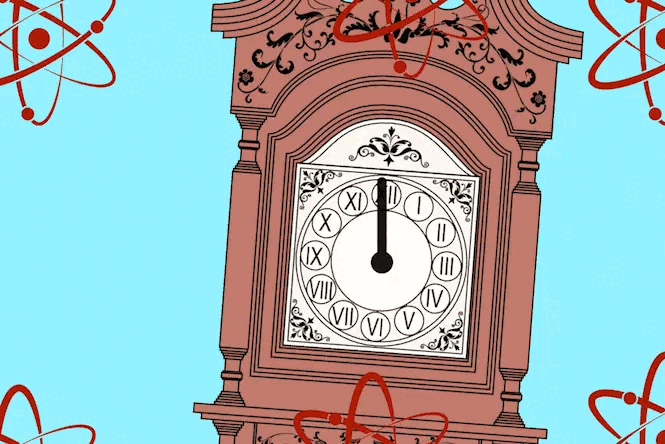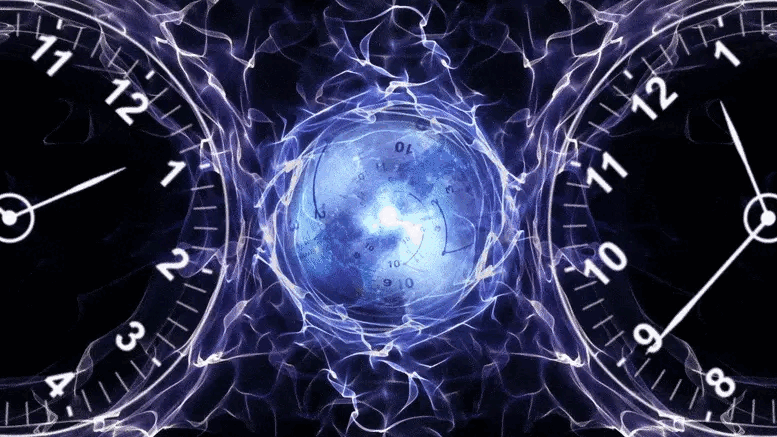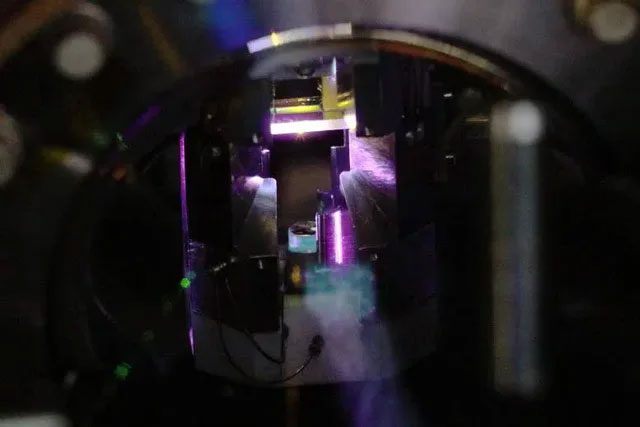This is a new technique for measuring oscillating atoms, which could improve the accuracy of atomic clocks and quantum sensors aimed at detecting dark matter or gravitational waves.
Quantum clocks are timekeeping devices that are regulated by the oscillation states of atoms. The oscillation frequency of atoms is constant and measurable, making quantum clocks one of the most accurate types of clocks to date.
Quantum sensors are systems of atoms whose oscillations can be utilized as detectors, indicating the presence of dark matter, gravitational waves passing through, or even new unexpected phenomena. Therefore, scientists can enhance the accuracy of atomic clocks as well as quantum sensors if they can accurately measure these atomic oscillations and how they evolve over time.
However, a significant truth is that the “noise” from the external world can quickly dominate small atomic oscillations, making any changes to these oscillations difficult to detect. This is a major barrier to improving quantum measurements.
Recently, physicists at MIT have demonstrated that they can significantly amplify quantum changes in atomic oscillations by putting particles through two key processes: quantum entanglement and time reversal.

In advanced quantum clocks, physicists measure the oscillations of thousands of ultra-cold atoms multiple times to increase the chances of obtaining accurate measurements. However, these systems have some uncertainties, and their timekeeping could be even more precise. The MIT physicists showed that they could significantly amplify quantum changes in atomic oscillations by putting particles through two key processes: quantum entanglement and time reversal.
With the current level of scientific knowledge, humanity has yet to develop means of time reversal or definitively prove its feasibility.
Instead, scientists force entangled quantum atoms to behave as if they are evolving backward in time. Consequently, any changes to atomic oscillations are amplified and easier to track because the researchers have essentially “set up a shell” for the atomic oscillations.
In a study published on July 14, 2022, in the journal Nature Physics, the team of scientists demonstrated that the technique they named SATIN (Signal Amplification Through Time Reversal) is the most sensitive method ever developed for measuring quantum oscillations.
This technique can improve the accuracy of the most advanced quantum clocks today by a factor of 15, making their timekeeping precise to within less than 20 milliseconds over the entire timeline of the universe. This technique can also be used to further sharpen quantum sensors designed to detect gravitational waves, dark matter, and other physical phenomena.
“We believe this is a model for the future,” said lead author Vladan Vuletic, Lester Wolfe Professor of Physics at MIT. “Any quantum interference involving multiple atoms can be captured using this technique.”
The co-authors from MIT of the study include first author Simone Colombo, Edwin Pedrozo-Peñafiel, Albert Adiyatullin, Zeyang Li, Enrique Mendez, and Chi Shu.

A certain type of atom will oscillate at a specific and constant frequency, and if measured correctly, it can serve as a highly accurate pendulum. However, at the scale of a single atom, the laws of quantum mechanics and atomic oscillations will change like the face of a coin every time it is flipped. Only by performing multiple measurements of an atom can scientists estimate its true oscillation – a limit known as the Standard Quantum Limit.
In 2020, Vuletic’s team showed that the accuracy of current atomic clocks could be improved by entangling atoms – a quantum phenomenon where particles are forced to act in a highly correlated collective state. In this entangled state, the oscillations of individual atoms shift towards a common frequency, requiring less effort to measure accurately.
Vuletic stated: “At that time, we were still limited by the ability to read the clock phase” – the tools used to measure atomic oscillations were not sensitive enough to read or measure any small changes in the overall oscillation of the atoms.
In their new research, instead of trying to improve the resolution of existing reading tools, the research team sought to enhance the signal from any changes in the oscillation so that they could be detected by current tools. They achieved this by harnessing another strange phenomenon in quantum mechanics: time reversal.

MIT researchers used a laser system to entangle, then reverse the evolution of a cloud of ultra-cold atoms.
Most physical laws do not distinctly differentiate between the past and the future. For example, we can use an equation to describe the collision process of two balls. If we rewind to the moment of impact and then run it backward, we can still apply the old equation to describe the phenomenon. Both the backward and forward cases look very real, and to us, the two balls seem to go against the laws of time.
It is believed that a pure quantum system, such as a group of atoms completely isolated from everyday classical noise, will evolve forward in a predictable manner, and the interactions of the atoms (such as their oscillations) must be accurately described by “Hamiltonian” of the system – a mathematical description of the total energy of the system.
In the 1980s, theorists predicted that if the Hamiltonian of a system is reversed, and a similar quantum system is created to evolve, everything would appear as if the system were running backward in time.
Pedrozo-Peñafiel explained: “In quantum mechanics, if you know the Hamiltonian, you can track what the system is doing over time, like a quantum trajectory. If this evolution process is entirely quantum, quantum mechanics will tell you that you can reverse the evolution or bring them back to their original state.”
“And the idea is, if you can reverse the sign of the Hamiltonian, any small disturbance that occurs after the system evolves forward will be amplified if you reverse time,” Colombo added.

For their new study, the team investigated 400 ultra-cold atoms of ytterbium, one of the two types of atoms used in atomic clocks today. They cooled the atoms to absolute zero, at a temperature where most classical effects like heat disappear and the behavior of the atoms is completely governed by quantum effects.
The research team used a laser system to trap the atoms, then sent them a “entangled” blue light, which forced the atoms to oscillate in a correlated state. They allowed the entangled atoms to evolve over time, then exposed them to a small magnetic field, which created a very tiny quantum change, slightly shifting the collective oscillation of the atoms.
Such a change would not be detectable by existing measuring tools. Instead, the research team applied the time reversal feature to amplify this quantum signal. To do this, they directed them into another laser beam, colored red, which stimulated the atoms to separate, as if they were evolving backward in time.
They then measured the oscillations of the particles as they stabilized back to their unperturbed state and found that their final phase was distinctly different from the initial phase – clear evidence that a quantum change had occurred somewhere in their forward evolution process.
The research team repeated this experiment thousands of times, with quantum clouds ranging from 50 to 400 atoms, each time observing the expected amplification of the quantum signal. They found their entangled system to be up to 15 times more sensitive than similar non-entangled atomic systems. If their system were applied to modern quantum clocks, it would reduce the number of measurements these clocks require.
In the future, researchers hope to test their method on quantum clocks, as well as in quantum sensors, such as those aimed at detecting dark matter.





















































